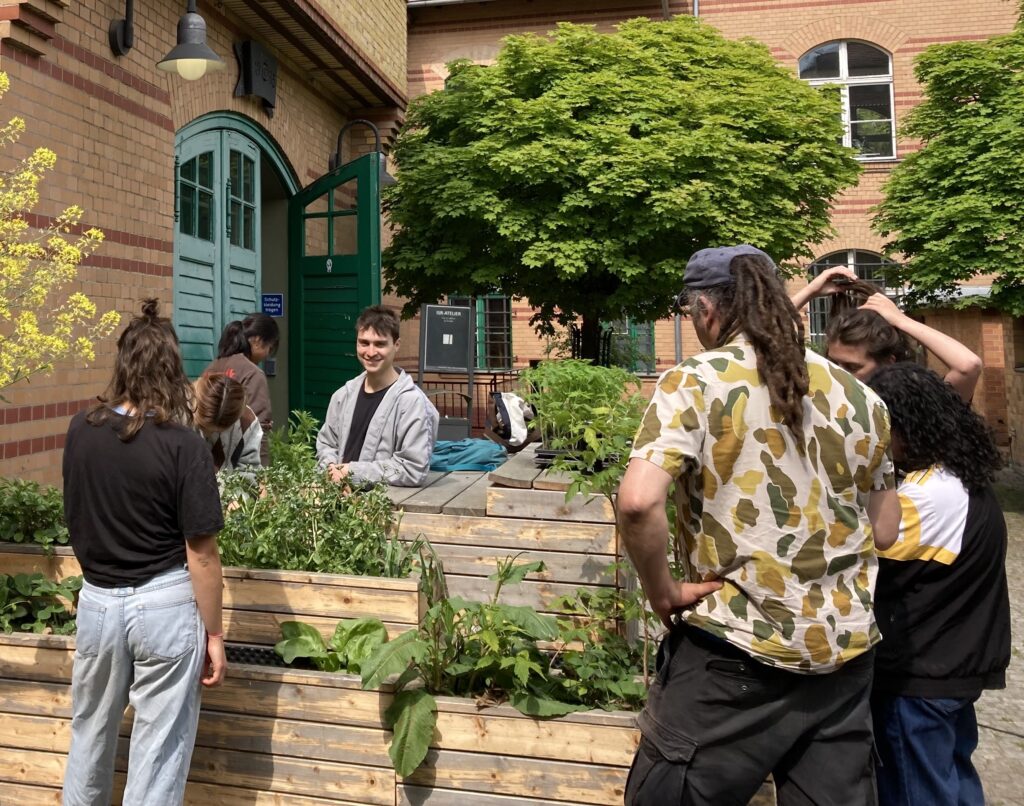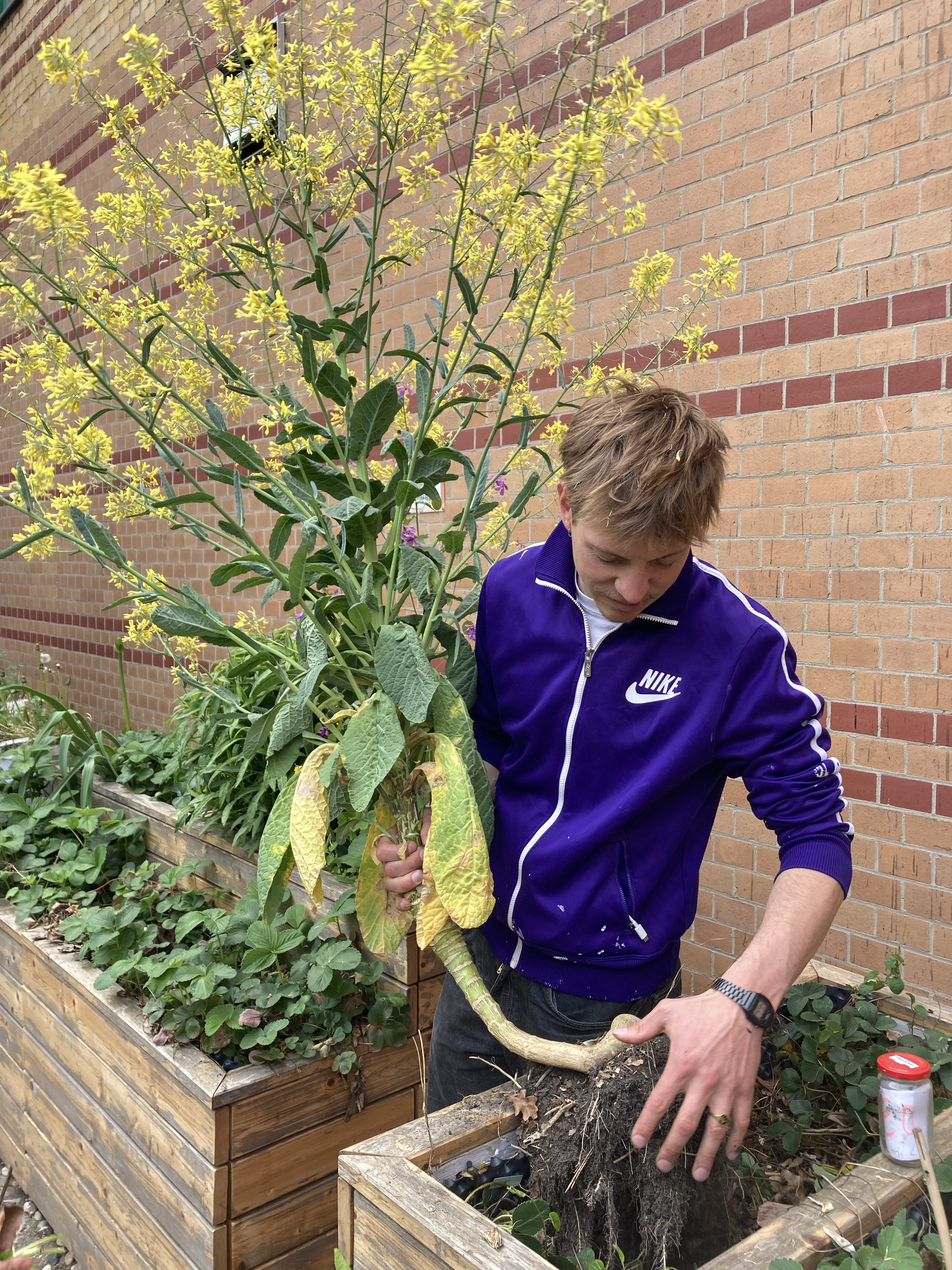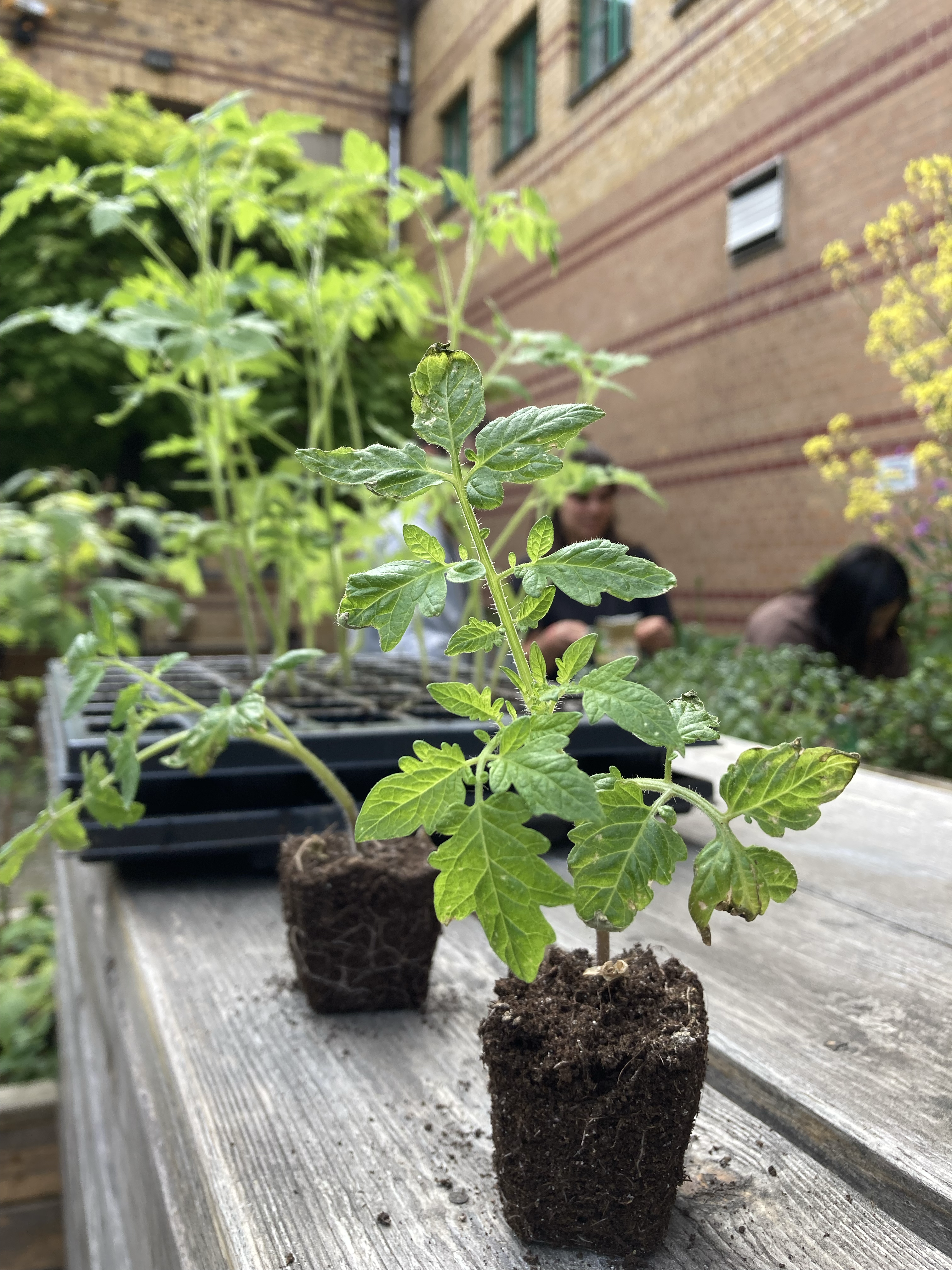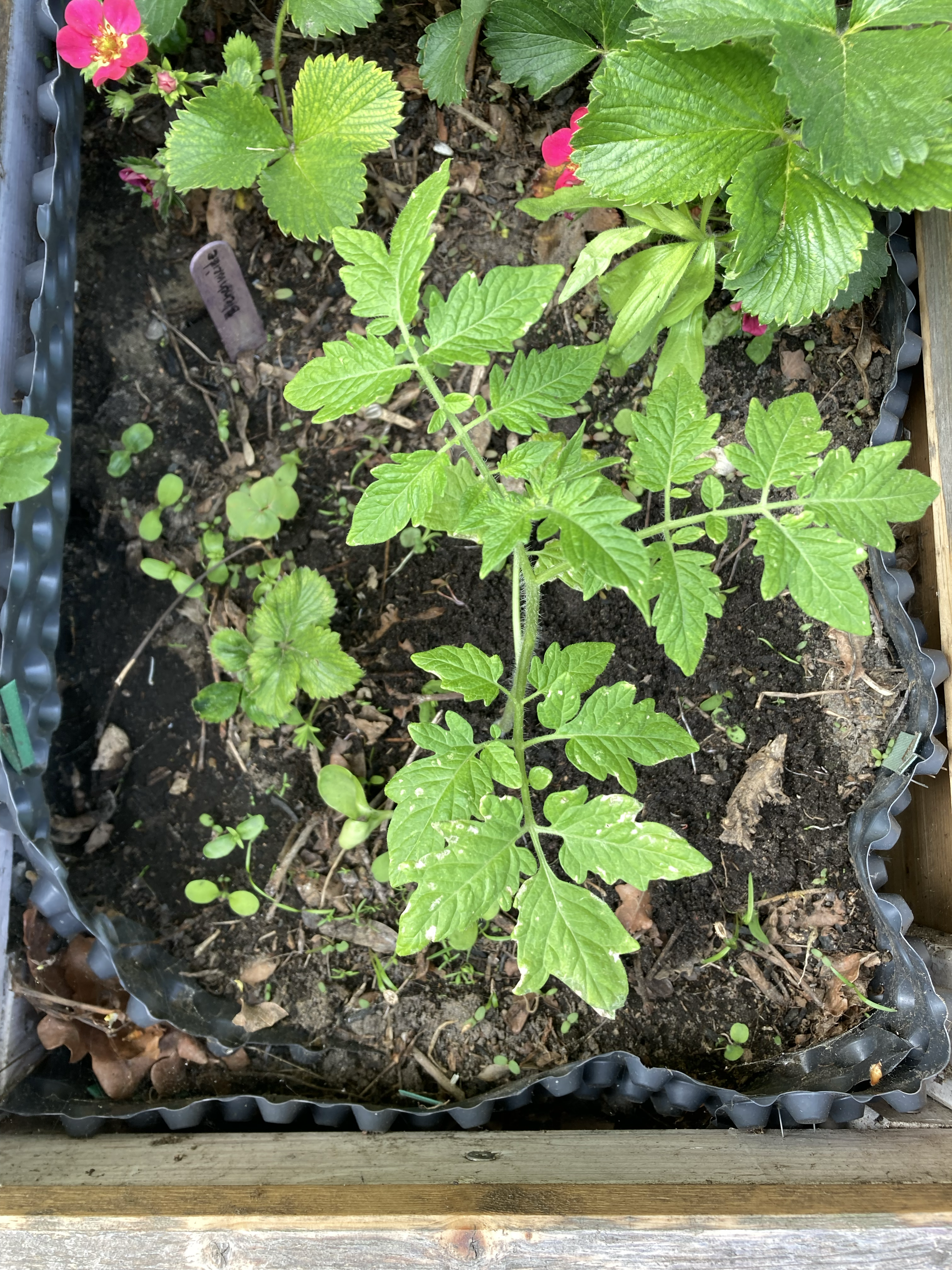
Almost simultanously, in the 1980s, German author Erich Fromm and US-American biologist E.O. Wilson developed the „biophilia hypothesis“. They both believed that humans have an innate inclination to connect with nature and living beings – on which they depend. Biophilia is suggested to be anchored in our genes, an intrinsic relatedness to nature that co-evolved in our cultural setting. Robert Pyle, a believer in the biophilia hypothesis, recalls children’s reactions when he puts butterflies on their noses while teaching about these animals. He often sees an epiphany in the children’s eyes due to the close contact with nature. However, Pyle adds: “This can happen to grown-ups, too“ (1993, p. 136). Yesterday, observers might have witnessed just that: people being bipohilic and experiencing the joy of connecting to other-than-human species, in this case plants.

On a semi-sunny Wednesday afternoon, the seminar group met at TU Berlin – not to pick apples – but to allocate raised beds to the tandem partners. After some introductory words by Janina and Thomas (the DIY spirit was repeatedly praised) the tandem partners quickly started getting their hands dirty. Beds were inspected, inventoried and cropping plans were discussed. Some students started hand-weeding, as the beds had been unattended to for the past two years or so.

Moreover, every gardening team received a young TUmate, a tomato strain bred by the Chair of Vegetation Technique and Planting Design at TU Berlin using an open source seed license. Some took their plant home, others planted it into the newly obtained raised beds.



Sources:
Fromm, E. (1981). Die Seele des Menschen (Vol. 35076). Ullstein.
Wilson, E. O. (1984). Biophilia. In Biophilia. Harvard University Press.
Pyle, R. M. (1993). The thunder tree: Lessons from an urban wildland (Vol. 220). Houghton Mifflin Boston.


